How to improve the guest experience in a restaurant: Knowing where to focus digital investment
Published on Jan 18, 2023
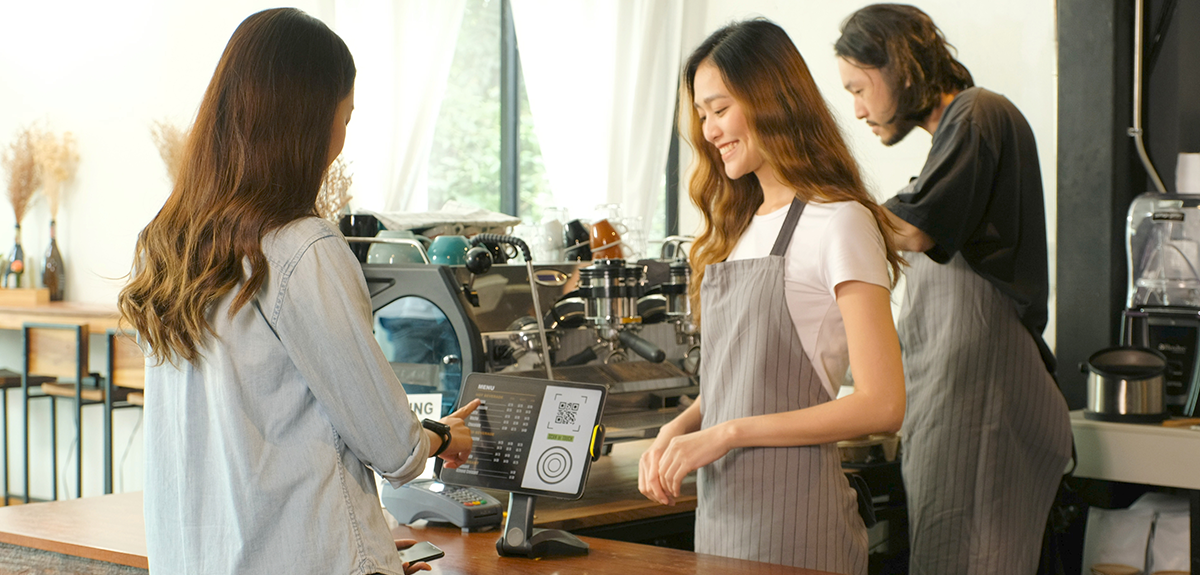
There are no cheap decisions when it comes to implementing customer-facing technology for restaurant brands. As future-forward technology like digital ordering, automation, voice recognition, and even robot-based service becomes more prevalent, the stakes will continue to elevate. However, the customer needs to remain at the center of the experience. How will you know what your customers need and what technology will help your bottom line?
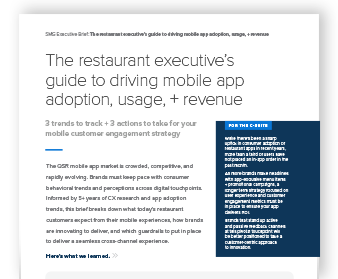
The restaurant’s guide to an effective strategy for branded apps
As an example of how customer experience (CX) data can inform user-focused improvements, we’ll start by looking at new research on the evolution of customer expectations and usage of digital ordering. We’ll then wrap up with strategies on how you can make use of CX information + insights to find the next step in technology that ensures you continue to evolve with your customers.
Study: Brand Apps and Digital Ordering Grow
Until relatively recently, digital presence and online ordering wasn’t a primary driver for restaurants. In 2017, 62% of respondents reported they had zero restaurant apps installed on their mobile devices. However, with the arrival of the COVID pandemic, a lot more diners started giving apps a chance. In 2022, 83% of respondents said they have at least one QSR app—with 36% saying they have 5 or more.
Just as important as the fact customers are using this technology is why, and where it needs to improve. Let’s look at the data around what works and what doesn’t with this new technology.
Mobile ordering becomes #1
Today, 3 in 4 customers report having used an app to place an order at a restaurant. The popularity of this method has outpaced other digital technologies, as well, beating the 56% usage rate of kiosks and 37% usage rate of QR codes.
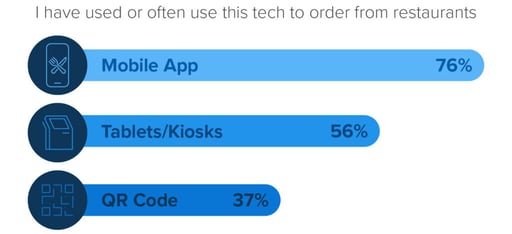
But getting the app on the phone is one thing, how can you keep customers coming back?
Understanding continued app use (The proverbial milkshake that brings them back to the yard)
The secret to getting customers to come back to your app is knowing why they downloaded it in the first place. The top reasons cited for downloading a restaurant app show customers are most often seeking out loyalty rewards offered through app orders, as well as the simplified ordering/customization process and ability to have a contactless experience.
While offering rewards can feel like giving away money, the benefits far outweigh the costs. SMG research shows customers return more than 10% faster when they redeem an incentive—leading to two additional visits each year on average—and when customers redeem their incentive, they purchase an average of 3 additional items, offsetting the cost for operators by boosting average ticket size.
By leaning into customer motivations and following the financial benefit of digital and app ordering, brands can develop strategies that lean into encouraging repeat visits and larger tickets in addition to improved efficiency.
But where you consider your successes, you also need to keep an eye on challenges.
Addressing tech problems
Though mobile apps have become highly favored tech for digital orders—with research showing 43% of respondents rating in app ordering as better then ordering in person—1 in 4 users have experienced a problem with their order. The most-mentioned issues are lack of customization/substitution abilities or incorrect orders.
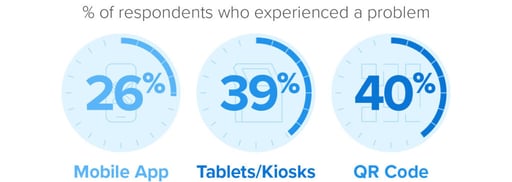
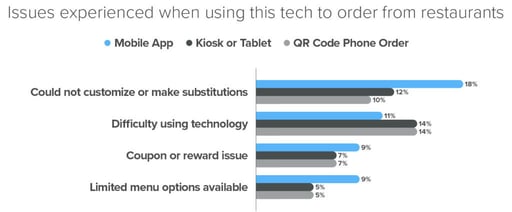
Brands that are able to iron out these issues and provide a more seamless digital experience have the advantage. Our research shows mobile apps can be great for business and bring in incremental visits—in fact, when a customer doesn’t experience a problem with a mobile app, 25% are more likely to visit the restaurant more often.
Much like following the CX data to be current with why customers are engaging with new tech, you want to follow and address points of friction to help ensure your investments are staying on track and continuing to address customer issues where they are without making them worse.
You can’t get them all
While digital ordering continues to increase across the restaurant industry, there is still a big part of the population that prefers human interaction. Not surprisingly, hesitance to use digital touchpoints increases with age, with data showing nearly 60% of customers over 55 performing in-person ordering.
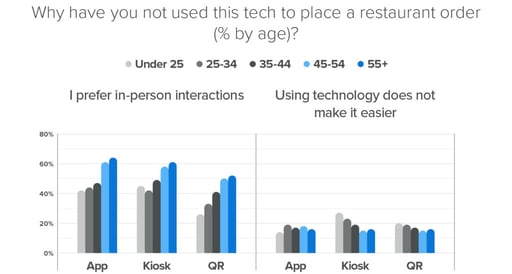
Other barriers to tech that were mentioned included not wanting to download another app and that technology wasn’t inherently making things easier. It’s also important to note here that although it’s the older customers who prefer in-person interactions, there are guests of all ages who don’t believe digital food ordering channels are enhancing the ordering experience.
Reviewing this data can also show the risks you face in going all-in before your customers are ready. More than half of customers 55 and older said they would visit a restaurant less or not visit it at all if it moved to a fully digital ordering experience, and only 15% of customers of all ages said a fully digital order experience would make them visit that restaurant more.
Following the data can help you make informed decisions about which sections of your customer base will and won’t be on-board with tech advancements and what steps you can take to not leave customers behind.
Using data with new tech to improve customer experiences
Not every restaurant brand should have the same digital transformation journey. After all, do your customers prioritize value? Speed? Personalization? Well, it varies by brand. When it comes to implementing an overall experience strategy, you must have a mechanism to understand your customers’ specific needs for changes to have a positive impact.
As more brands consider expanding automation and other tech-based enhancements, their strategy needs to stay focused on user experience and customer engagement metrices must be in place to ensure enhancements deliver ROI. Here are some methods you can apply to be sure any tech you’re considering will be needed, accepted by your customers, and effective.
Evaluate your current customer journey + digital channels
As customers have more digital-based ways to interact with your brand, the more chance for friction. Take time to map out and analyze the customer journey to find the areas that truly matter to customers and where customers encounter the most friction. Where are you losing customers? Is a part of the customer journey confusing? Is the experience easy and frictionless from first search to post-visit feedback?
Determine what’s working and what’s not working
You must be paying attention to where your customers are having issues (and resolving them), and how customers feel about their journey. Channels to collect both feedback that you ask for and that customers volunteer is essential in getting an accurate picture of where customer needs could be better met.
Brands can even go the extra mile by utilizing case management and ratings + reviews management to find and address individual issues on a case-by-case basis. Doing so is not only proven to raise loyalty where an issue was resolved satisfactorily but gives insight into issues that could potentially be addressed through technology.
See what your competitors are doing
Keep up with strategies other brands are applying. Brand experience management can provide information about relative perception and purchase funnels to help where you rank in effectively applying technology to your customer experience.
Check performance across locations
Technology might not be necessary across the board among your locations, and what will solve a problem in one place might generate one in another. Benchmarking across locations can help determine the most impactful areas of focus across the organization to be sure org-wide efforts aren’t shooting you in the foot.
Case study: Balancing innovation with data-driven decisions
A lesson in the power of data to inform your technology strategy comes from an SMG restaurant client who was considering rolling out digital menu boards to their locations. The brand worked with their SMG team to pilot three different prototypes across separate locations and gauge performance against traditional menus.
The data showed overall customer satisfaction scores stayed flat across the test locations, and further analysis showed no positive impact to their bottom line. At the end of the day, the brand not only saved money by averting a costly tech implementation that would be unlikely to deliver a benefit, but team members were also able to provide a quantitative rationale for making the decisions, not just a gut feeling.
Making the right decisions
Tech innovations are developing at a rapid pace, and missteps can potentially lose you customers, time, and valuable resources. Be sure you’re working with a partner to help find the right areas for improvement and the right technology that leads to objectively better experiences for your customers and employees. Request a demo from SMG today to see how we’ve helped hundreds of restaurant brands improve customer experiences and boost their bottom line through data-driven insights and decision-making.
Related articles

Why a personalized customer experience is the key to business success
In today's relentless business landscape, personalization in customer experience (CX) has evolved from a luxury to a vital necessity. In fact, 81% of customers prefer companies that offer a personaliz

Text analytics: Everything you need to know to create real customer experience impact
With rapid investment in customer experience management (CEM) platforms, leading brands know the quickest path to growth starts with listening to customers. But an increasingly complex customer journe
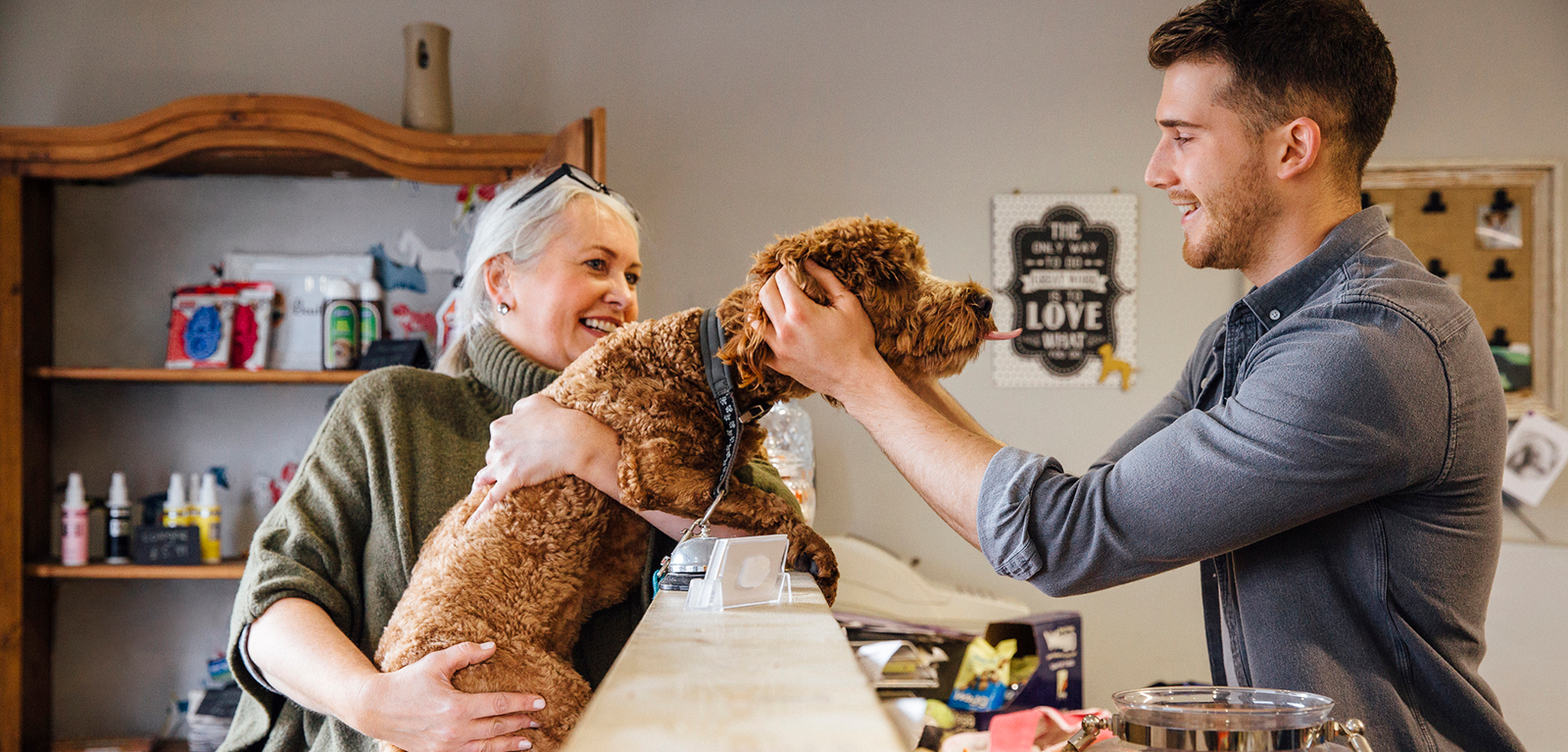
How understanding the customer journey elevates customer experience
Discover how understanding and optimizing each phase of the customer journey—from awareness to advocacy—can elevate your customer experience strategy, build loyalty, and drive conversions. Learn actio